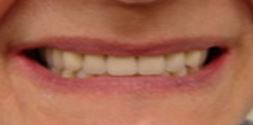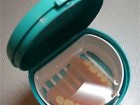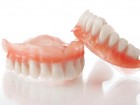Removable dentures

Modern dentures, both removable and non-removable are used in the complete or partial absence of teeth.
Unfortunately, at present, even with the latest technologies for restoration of teeth and materials, it is not always possible to resort to fixed prosthetics.
In this case, the use of removable dentures comes to the rescue. Removable dental prosthetics is one of the most popular areas in dentistry.
What it is
Removable dentures are structures that the patient can remove and install on their own.
They are used in the absence of several teeth, but often a removable design can even be used to restore one tooth.
A removable prosthesis rests on the gum, but in the presence of preserved teeth, part of the load is transferred to them.
Dental prosthetics in modern conditions is the presence of such technologies that make it possible to produce convenient removable dentures with excellent aesthetic properties and high wear resistance.
What are

Removable structures can be:
- Complete - restore the entire jaw.
- Partial - replace several teeth in a row.
They are:
- Lamellar.
- Clasp.
- Immediate prostheses.
- Removable sectors or segments of the dentition.
- Single - used to restore one tooth.
Full removable dentures
They are used in the complete absence of teeth on the jaw.
- Complete removable structures rest on the alveolar processes of the upper or lower jaw, the palate is an additional support on the upper jaw.
- Fixation of complete prostheses is insufficient due to the lack of teeth that could become a support structure.
- Such products are made from acrylic plastic, or from nylon.
There are also conditionally removable dentures. They are better fixed to the jaw due to the implantation of mini-implants into it.
Partially removable structures

- Unlike complete prosthetics, a partial denture is fixed to the abutment teeth. In this case, the load is distributed between the gum and teeth.
- Partial structures are made of acrylic or nylon, and metal can also be used to make the clasp prosthesis frame.
- Partial dentures are used in the absence of one or more teeth in a row.
- Immediate prosthesis is a temporary structure, which is fixed on the jaw after tooth extraction or during the manufacture of a permanent structure.
- Clasp construction can be used with full or partial prosthetics. The main difference in the design is that the load when chewing is distributed evenly between the jawbone and the abutment teeth.A clasp prosthesis is used to immobilize, splint teeth with loose teeth due to periodontal disease.
- Unilateral prostheses - removable sectors and segments are used to restore the chewing group of teeth on one side of the jawbone.
- Single prostheses can be fixed to the abutment teeth using metal legs that can be glued to them or fixed with cement.
Kinds
Clasp prosthesis

The design has a metal base, to which the gums are made of plastic and crowns made of ceramics. The base of the prosthesis is a clasp (metal arc).
Clasp structures are fixed due to their attachment to the abutment teeth with the help of clasps or locks. In the absence of supporting teeth in their place implants are implanted, to which the prosthesis is fixed.
Clasp structures can be fixed in two ways:

- With the help of clasps - branches of a metal frame. Such a fixation system is quite reliable and comfortable. The drawback of the clasp mount is that if the metal clasps fall into the smile line, then such designs look unaesthetic.
- With the help of attachments (micro-locks), the elements of which are mounted on the crowns of the supporting teeth and the body of a removable prosthesis. When donning a structure, parts of attachments connect and snap into place. Since the micro-locks are completely invisible, the aesthetics of the denture does not suffer at all.
Nylon designs

- Flexible nylon prostheses are very flexible designs. In their manufacture, metal is not used.
- Fastening of structures is carried out by suction to the gums.
- Nylon prostheses are more aesthetic than plastic and clasp constructions.
- However, nylon prostheses have a number of disadvantages: lack of getting used to this design, inability to chew food normally and other disadvantages.
Laminar prosthesis

It is made of acrylic with teeth made of soft or hard plastic.
The acrylic construction has a clasp made of rigid wire that extend from the base of the prosthesis and is fixed on the abutment teeth.
Single prosthesis

In the absence of one or two teeth, a butterfly denture is used. Most often it is used to restore distant chewing teeth.
The butterfly prosthesis can be worn constantly and the design is invisible in the oral cavity.
Implant prostheses
- Removable dental structures are mounted on pre-implanted implants.
- Various types of removable structures can be fixed on implants.
- Removable constructions on implants are installed with a complete edentulous jaw, since the fixation of the prosthesis due to the suction effect does not give the desired effect.
- This leads to the fact that the design constantly slides, diction changes, and there are also inconveniences when chewing.
The denture is especially tightly fixed on the lower jaw, and therefore, there are several ways to improve the fixation of a full denture.
Ways to Improve Fixation
Mini implant prosthetics
Two or three button-type mini-implants are implanted into the jawbone, into which spherical attachments are screwed.
On the inner surface of the removable structure in the projection of attachments, deepenings are made into which silicone matrices are inserted.
Implant prosthesis with beam locks

Two or three implants are implanted in the jaw, and a metal beam is made between them.
A recess is made on the inner surface of the removable structure, which corresponds to the dimensions of the beam and silicone matrices are inserted into the same, which, when put on the prosthesis, hold it very firmly.
Full removable design on intra-channel implants
- In order to make such a design, it is necessary that the patient has at least 2-4 single-root teeth (or roots). Better if it will be fangs and premolars.
- For the production of prostheses, the crown of the tooth is sawn under the root with further filling of the canals.
- Implants that resemble pins are screwed into the root canals. They have protruding elements in the form of a metal head.
- On the inner surface of the removable structure in the projection of the metal heads are made recesses filled with silicone matrices.
- A removable denture is firmly held on the jaw due to the roots of the teeth.
At the same time, the atrophic processes of the lower jaw slow down sharply, which increases the service life of the structure.
Video: “Production of nylon prostheses”
What are they made of?
- Removable structures are made from acrylic plastic by injection molding using hot and cold polymerization. The use of such plastic allows the denture to retain its properties for a long time - color, shape, strength and density.
- Teeth for designs are available in the form of ready-made sets, which vary in size, shade, shape. This makes it possible for the patient to choose exactly the set that suits him best. Teeth sets can be imported or domestic. Imported teeth are of the best quality.
- Plastic for the manufacture of the basis of the design also has its own properties. Imported plastic is more durable. Structures made of such plastic are thinner than their domestic counterparts, which affects the usability of such a prosthesis.
- A design made by hot polymerization of plastic after manufacture has some inaccuracies, which affects the strength of its retention in the oral cavity. Plastics cold polymerization do not give such shrinkage. Currently, the palatine surface of the structure is made with a relief on it, which has a beneficial effect on diction, and adaptation to a removable structure is also accelerated.
How to make

Removable prostheses are made in several stages:
- First, an X-ray examination of the dentition is carried out.
- Impressions are being taken.
- The manufacture of a dental structure in the laboratory.
- Trying on the finished prosthesis.
Currently, thanks to the perfect impression technology and the possibilities of D modeling, it is possible to make the removable structure as anatomically correct as possible to exclude malocclusion and the presence of discomfort in the patient.
Indications
The installation of removable dentures has the following indications:
- Loss of one or more teeth.
- Complete absence of teeth on the jaw.
- If implant placement is not possible.
- As a temporary construction.
- Defects in the dentition.
- The presence of loose teeth. The use of clasp construction helps to strengthen them.
- Severe form of periodontitis and periodontal disease.
- Lack of abutment teeth for prosthetics with bridge structures.
Advantages and disadvantages
Advantages of removable prosthetics are:
- The manufacture of a removable structure without turning the supporting teeth.
- Dentures are easy to care for.
- Good aesthetic appearance.
- An ideal solution with full edentia.
- Affordable cost of prosthetics.
Removable prosthetics has the following side effects:
- Weak fixation of the structure in the oral cavity. When talking or chewing, the structure can easily slip out of the jaw.The solution to this problem may be the use of fixing materials.
- Atrophic changes in the alveolar processes. Chewing load is transmitted to the mucosa of the alveolar processes, while narrowing of the vessels is observed, as a result of a decrease in blood outflow, edema of the mucous membrane as a whole develops.
- The presence of the greenhouse effect. Low thermal conductivity leads to the formation of temperature differences under and around the structure. Together with the presence of porosity of the material and the accumulation of food particles in the pores, it can cause inflammation and a source of halitosis.
Video: Clasp prostheses
Which dentures are better
Full removable designs

- With full adentia, the best option would be to use a structure made of acrylic plastic.
- Plastic prosthetics are the most affordable way to restore the functionality and aesthetics of the oral cavity.
- The disadvantages include discomfort, rubbing gums, decreased taste sensitivity during meals, impaired diction. Such constructions require constant correction and cleaning.
Partially removable dentures
With partial restoration, prosthetics with clasp structures are the best option.
- They gained the greatest popularity since are the most affordable, it is convenient and aesthetic, indicated for inflammatory diseases of the gums and have a long service life.
- For clasp prostheses, various fixation methods are offered: with the help of clasps, locks and telescopic crowns.
- The disadvantage of clasp prostheses is the length of the adaptation period, the presence of clasps in the smile zone cannot provide their ideal aesthetics.
- Fixing hooks to abutment teeth can cause tooth decay and loosening of teeth.
Nylon Designs
- The use of nylon prostheses has several advantages, which boil down to the fact that there are no metal parts in the structure, which is a plus for people suffering from allergies to metal.
- Nylon designs have excellent aesthetics.
- The disadvantages of nylon prosthetics include the incorrect distribution of chewing load, which leads to the rapid development of bone atrophy.
- Such constructions are inconvenient to chew solid food. The cost of nylon prostheses is quite high.
All of the above structures can be installed on implants.
- Clasp removable structures are an ideal option for prosthetics on implants, since they have a metal base with which the connection with the implant becomes more reliable.
- When installing plastic prostheses on implants, such a disadvantage as a violation of diction is eliminated.
- Nylon prostheses can also be fixed on implants, but this method of prosthetics significantly reduces the life of the nylon structure.
Photo: before and after
 |
 |
 |
 |
 |
 |












